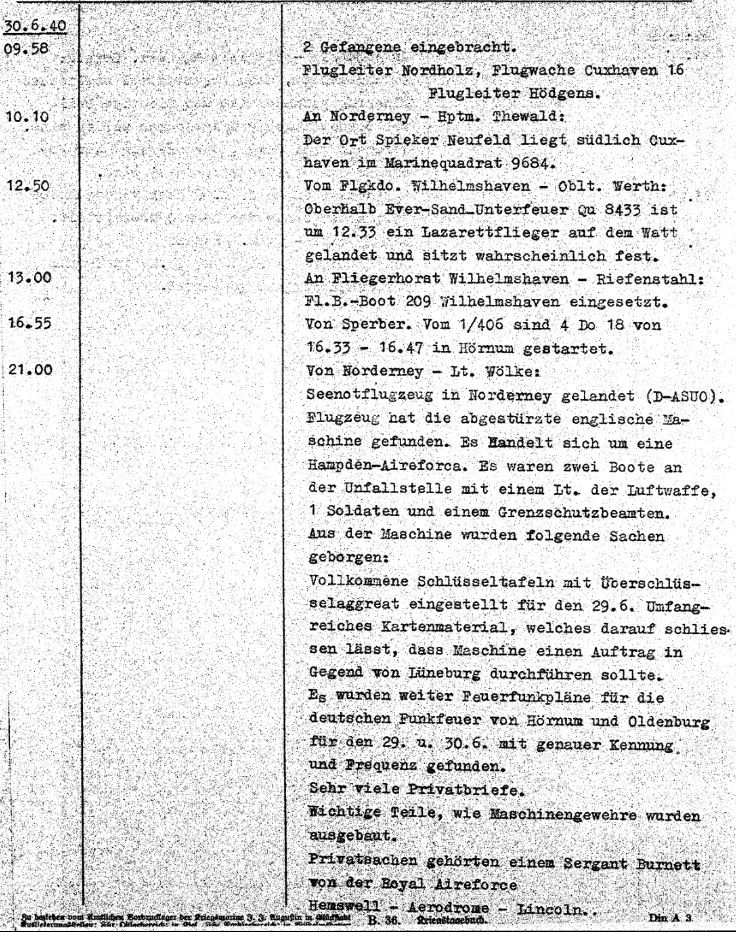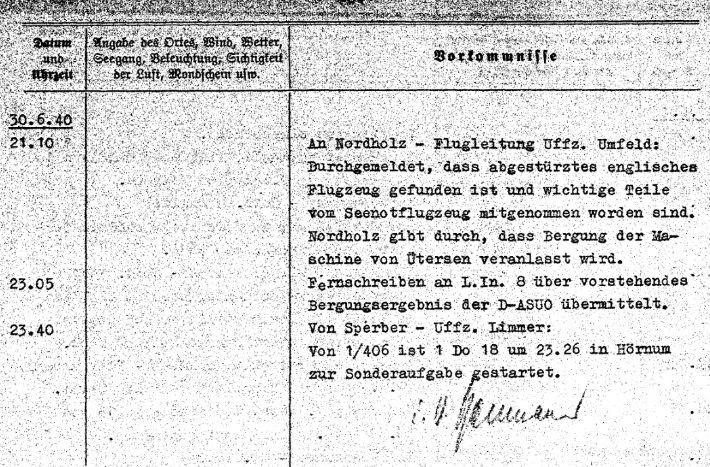Neuwerk Island
During WWII, various Wehrmacht units were stationed at Neuwerk. The Luftwaffe was represented here with airspace observers and an air intelligence service, the Navy primarily with the signal station and the anti-aircraft searchlight on the Neuwerk tower and later also with the 3rd battery of the Marine Artillery Division 114. There were also units of the Reich Labor Service and the Todt Organization. According to indications, there was also an anti-aircraft position here, but there are still no sources to confirm this.MB

At the beginning of the war, an anti-aircraft searchlight was mounted on the north side of the Neuwerk tower. Today, this is the upper exit of the external spiral staircase. Source: MB
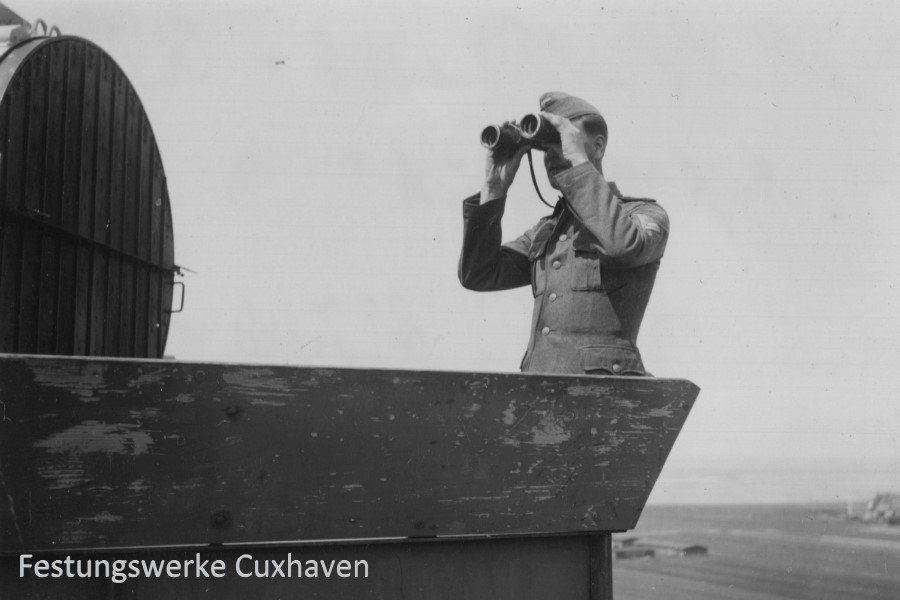
Presumably this was an anti-aircraft gunner with a mirror diameter of 150 cm.Source: MB
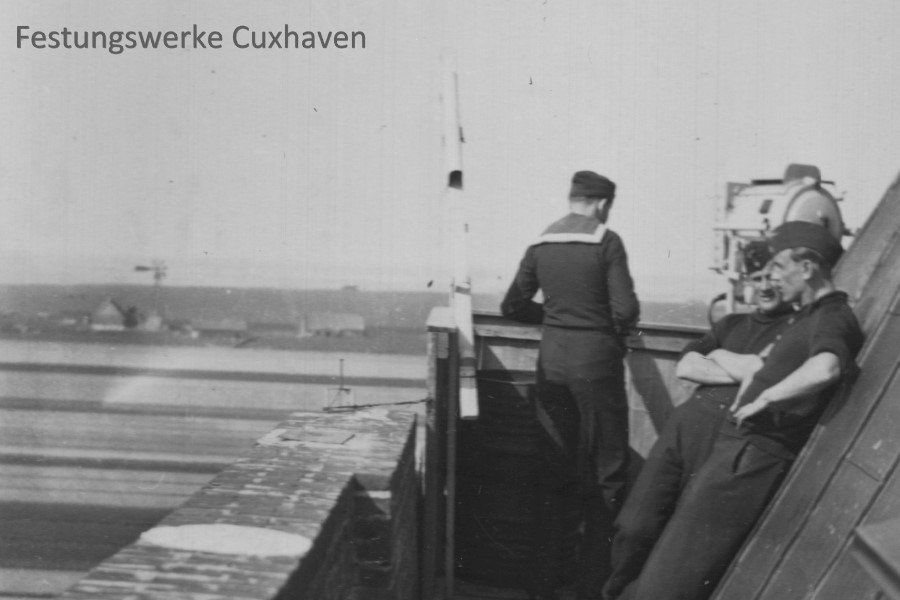
There was also a Morse searchlight on the north-west side of the tower. Presumably for communication with the naval ships on the Elbe, the post on Scharhörn and in the Neuwerk outer dike. Source: MB

Crew of an air force intelligence unit on the island of Neuwerk.Source: MB
In a letter shortly after the end of the war, the island teacher Cors wrote that French foreign workers (presumably forced laborers) were on the island at the end of the war. Transporting materials, military equipment and provisions was not easy. Because the mudflats were much softer than today, traveling by truck posed a considerable risk. Many goods such as building materials and similar items for military buildings were therefore brought to the island by barge. There was a jetty near the bathhouse. From there, the materials could then be transported on by lorry. Lighter goods were brought to Neuwerk by "Junker-52" (JU52) or "Fieseler Storch" aircraft. Military actions only occurred occasionally. The Cuxhaven author and local historian Gerd Wildfang writes in his monumental work "Fortress Cuxhaven" that an Allied bomber that was caught by a searchlight once dropped bombs. There were only six bomb craters. Another time, a burning bomber was to be shot at by the light anti-aircraft guns. But it was mainly a sea rescue cruiser that was hit. The former naval artilleryman Kurt Meinert, who was stationed on Scharhörn in 1942, mentioned that they shot down a bomber in the summer of 1942. There are only a few sources about the lives of the soldiers on Neuwerk. In a postcard dated December 15, 1940, a sailor wrote: "It's pretty dull here on the island because there's no distraction, because apart from a few farming families, there's only a pub and otherwise only soldiers. The service and the food are good, though." A labor service man sent "warmest greetings from the most boring island." Another complained that it was very difficult to leave the island. The officers had it better. There was a barracks with a cinema/dance room for them. Source: Courtesy of Kurt Eisermann

To the east of the tower mound stood a barracks complex (left photo), which had been built before the war as a rest home for Hamburg's sluice workers, the Hummelkoje. When the Luftwaffe's radio direction finding station was set up in 1938, this complex was ideally located near the tower and the signal mast. It was in operation until the end of the war.
After the war, the Hummelkoje became a children's convalescent home for a while. It then became a residential quarters for sluice workers. After 1952, the barracks were demolished. Source: Contemporary witnesses, Neuwerk Island
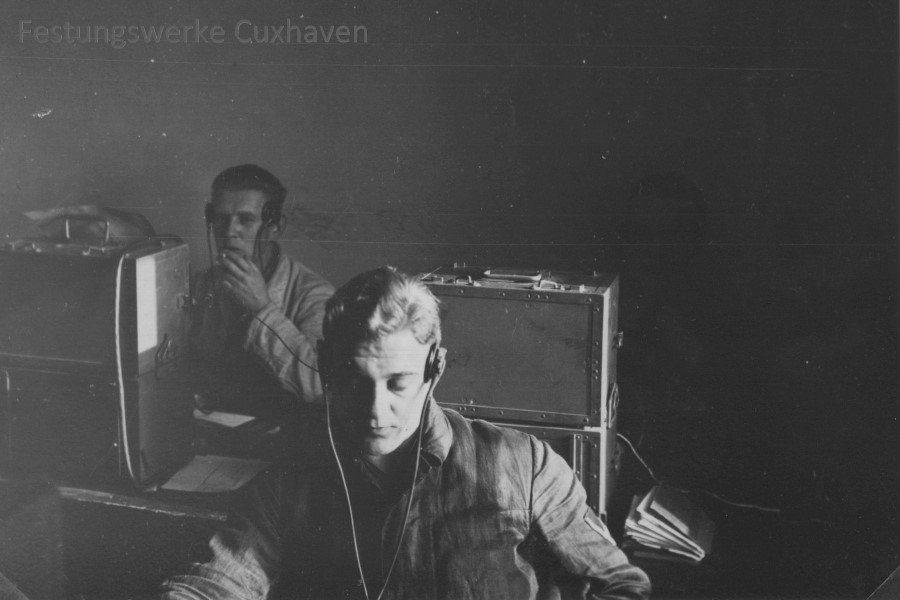
Soldaten der Luftwaffennachrichteneinheit an ihren Arbeitsplätzen in der Funkpeilstelle.
Quelle: M.B.

Quelle: M.B.

The former "Hundebalje" in the Neuwerker Bauernhafen on the south side of the island. The current jetties on the west side did not exist in the same way as they do today, but there was a small jetty at the former bathhouse in the north. Source: MB

Apparently there is a change of personnel from the Navy and Air Force in the Bauernhafen. In the background the Westhof/Fock. To the left of it an observation tower. Source: MB

The exact date of these photos is unfortunately not known. But it is probably 1940/41. These two winters were very harsh with temperatures below minus twenty degrees. The photo is again of the west side. Source: MB

Since the water depth in the Cuxhaven Wadden Sea area used to be noticeably deeper than it is today, massive ice barriers were formed at that time due to compaction.Source: MB
In the Neuwerker Kurier of June 2020, 90-year-old Hans-Eberhard Hofmann from Otterndorf reported that in March 1944, at the age of 16, he was drafted into the Reich Labor Service and sent to Neuwerk. There, the RAD boys were soon placed under the command of the navy. One task was to supply the crew on Scharhörn - consisting of a sergeant and ten Russian volunteers - with food. They were never shot at by English bombers flying low over the mudflats. Hofmann raved about his service on Neuwerk. "For us it was paradise. We fished in the sluice and looked for seagull eggs. You had to be careful. Some were incubated. The food was good because we belonged to the navy. There were lots of potatoes. We had to peel mountains of peas. Grate mountains of carrots. There was very little meat.” But he was soon expelled from paradise and transferred to Saxony, where he was taken prisoner by the Russians. Of his 51 classmates, only seven survived the war. After the war, all military installations were gradually removed. Today, there is no reminder of the war. Courtesy of Kurt Eisermann

The Neuwerk tower with the attached anti-aircraft searchlight and the naval signal station.Source: MB
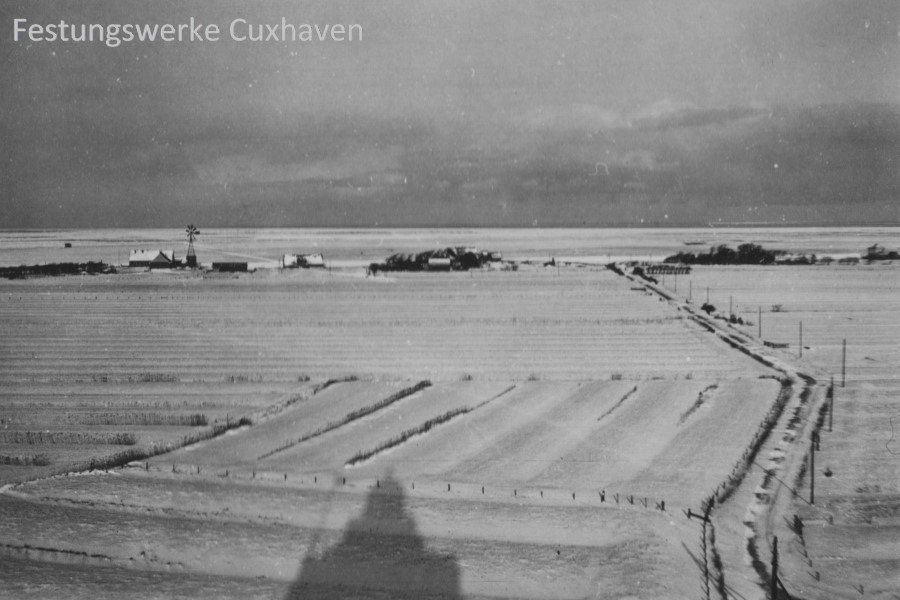
Looking north, the well-known middle path across the island. On the left is the Osthof/Griebel with the wind turbine. The small dark point behind it is the observation post in the outer dike area. Source: MB

Lots of ice in front of the pierSource: MB

The observation barracks in the north of the outer dike area.Source: MB
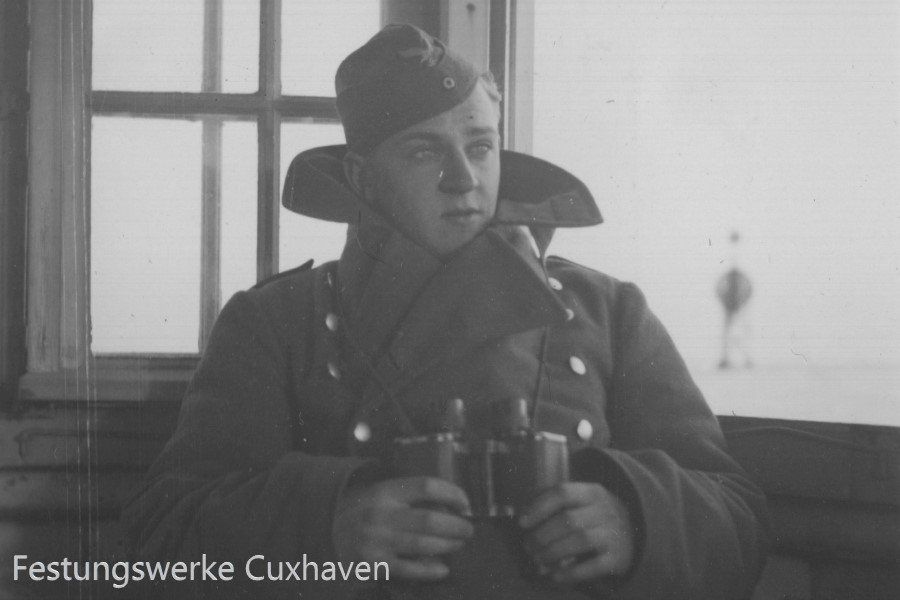
Most of the photos in this section are from this unknown Luftwaffe soldier (Neuwerk). If anyone recognizes the face and knows who it was, we would be very happy to receive information. He apparently had a special connection to the island of Neuwerk. The photo was taken in the observation hut in the northern foreland, with the east beacon in the background. Source: MB

Warming up again after the cold guard duty.Source: MB
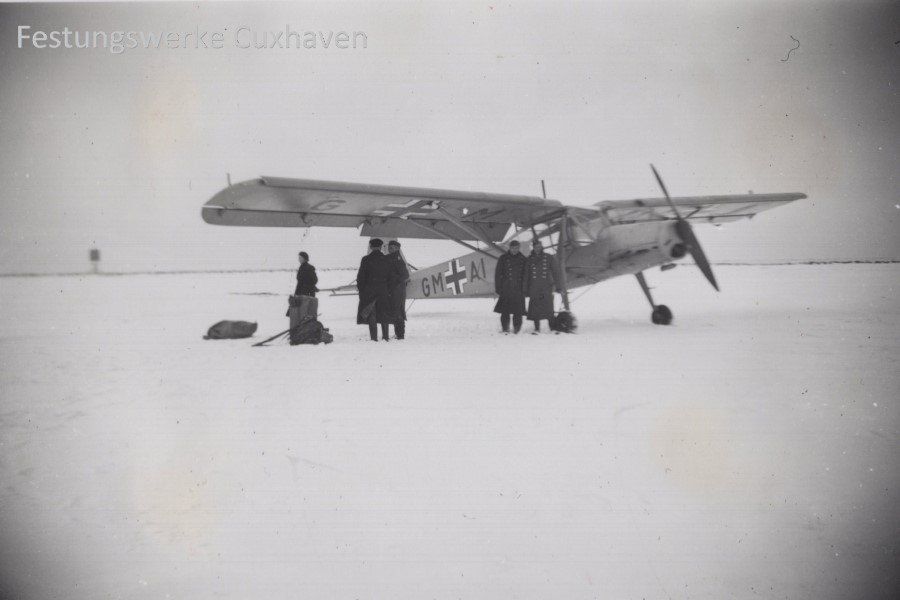
In the meantime, it was no longer possible to supply the island due to the heavy ice. Therefore, during this phase, this was done with Luftwaffe aircraft that landed in the foreland of the island's dike. The photo shows a Fieseler FI 156 "Storch". The GM A1 machine in the photo survived the entire war and is in 2021 in airworthy condition and is privately owned in Norway. In the background is the Nordbake. Source: MB

This "Storch" apparently crashed during landing in the area in front of the dyke, with the undercarriage breaking away completely.Source: MB
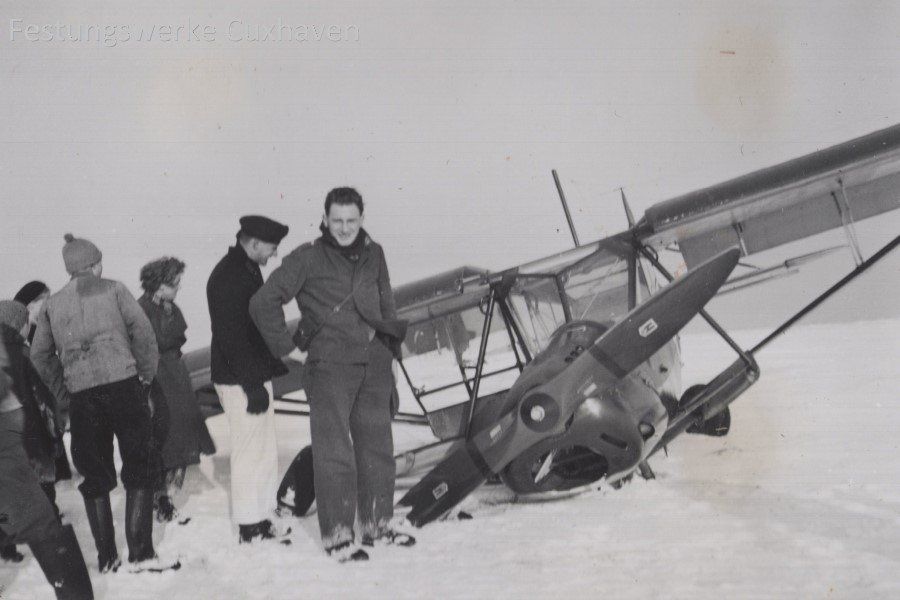
Quelle: M.B.

The damaged aircraft was pulled by sleigh and horse power to a farm and stored there for a long time. Unfortunately, nothing is known about the further progress of the repairs.Source: MB
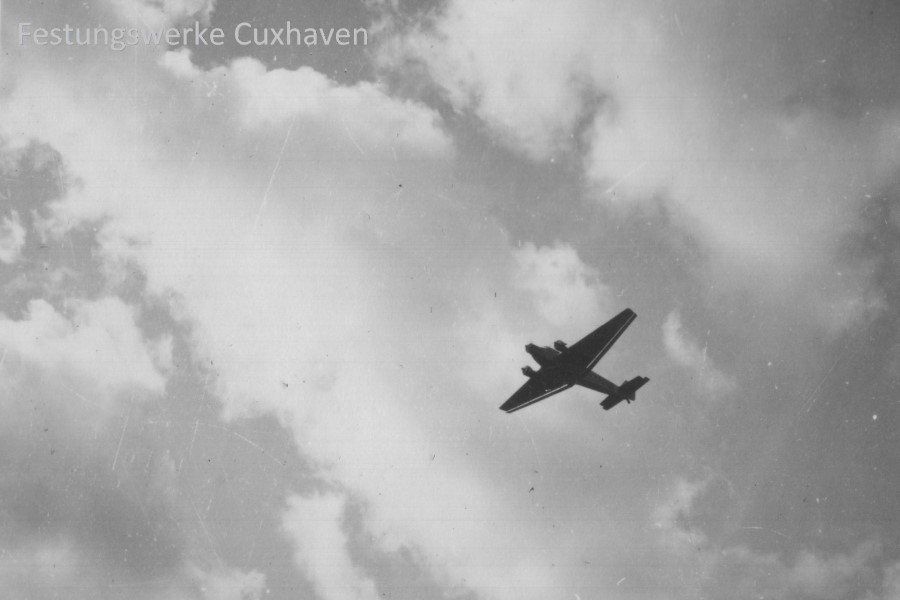
The Luftwaffe's workhorse, the Junkers 52 (Aunt JU), was also used for air transport. Source: MB

The JU 52 1Z PH in the outer dike area of Neuwerk.Source: MB
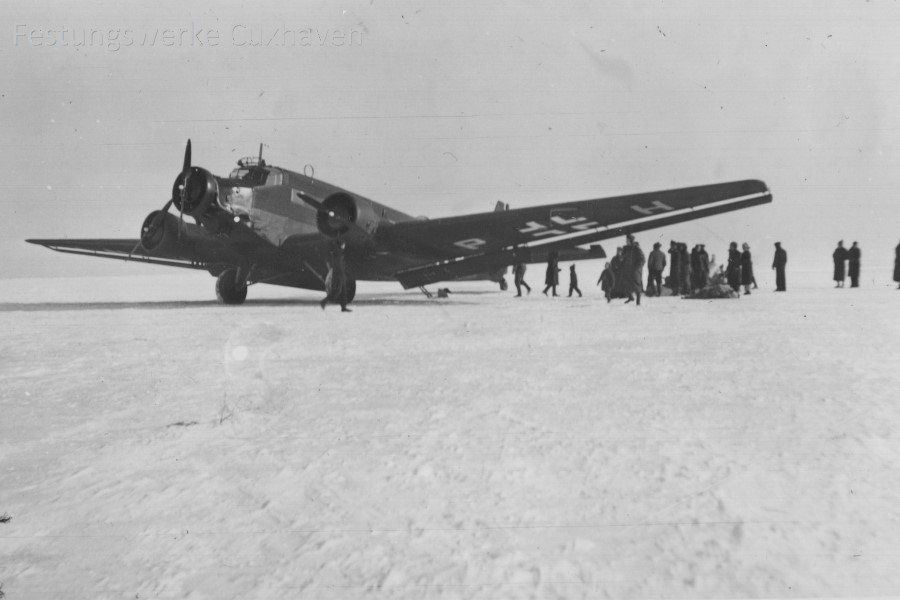
The planes probably landed on the remains of the former civil airport Cuxhaven - Neufeld in Groden. JU 52 minesweeper aircraft "Mausi" are also said to have taken off from there for missions in the German Bight.Source: MB
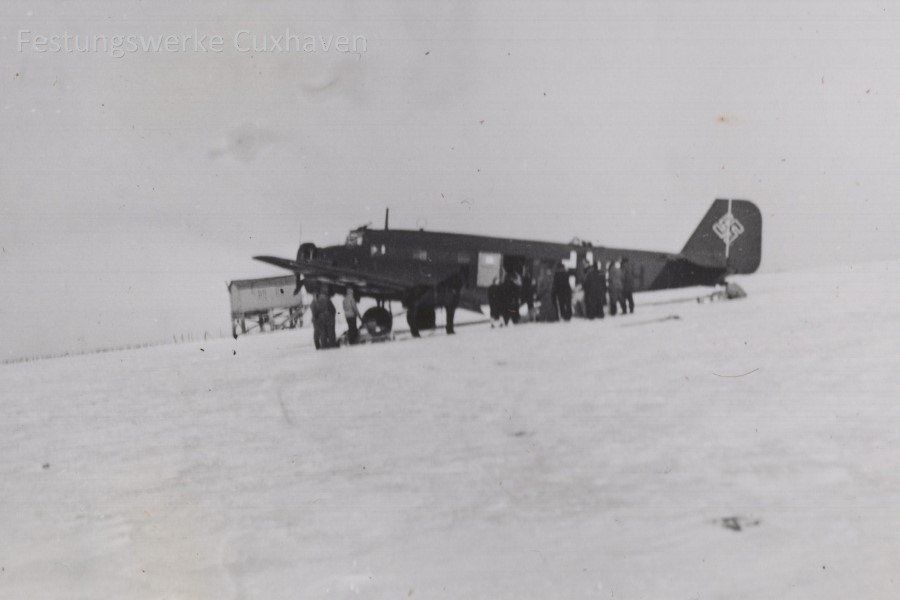
The machine in the Neuwerk outer dike in front of the airspace observation barracks.Source: MB
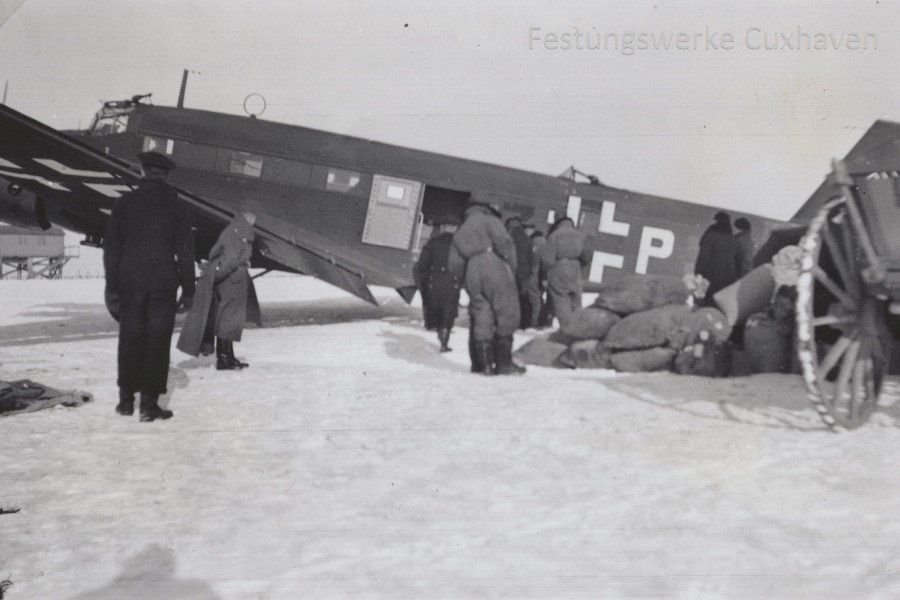
Material and personnel traffic between Cuxhaven and the island of Neuwerk.Source: MB
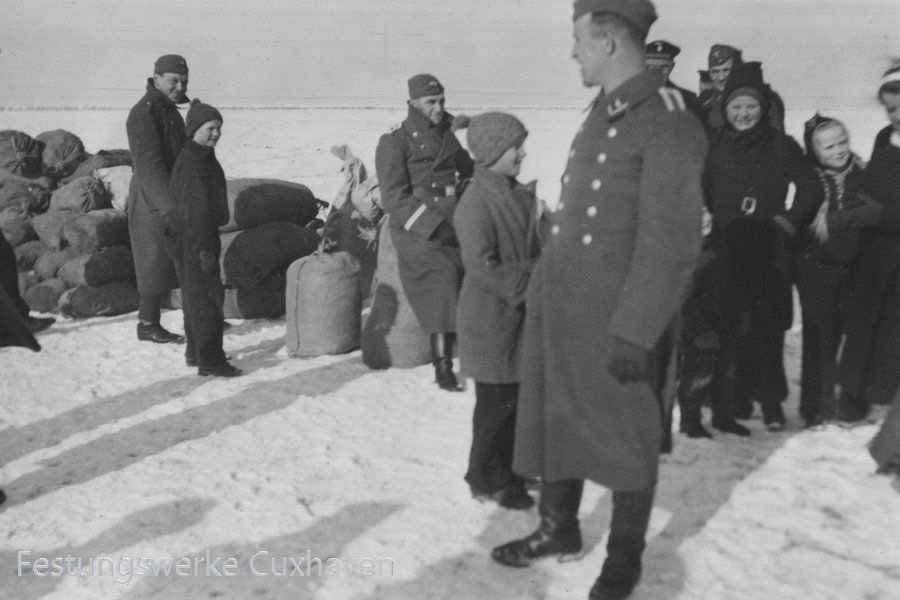
This was apparently also an exciting thing for the children of Neuwerk.Source: MB
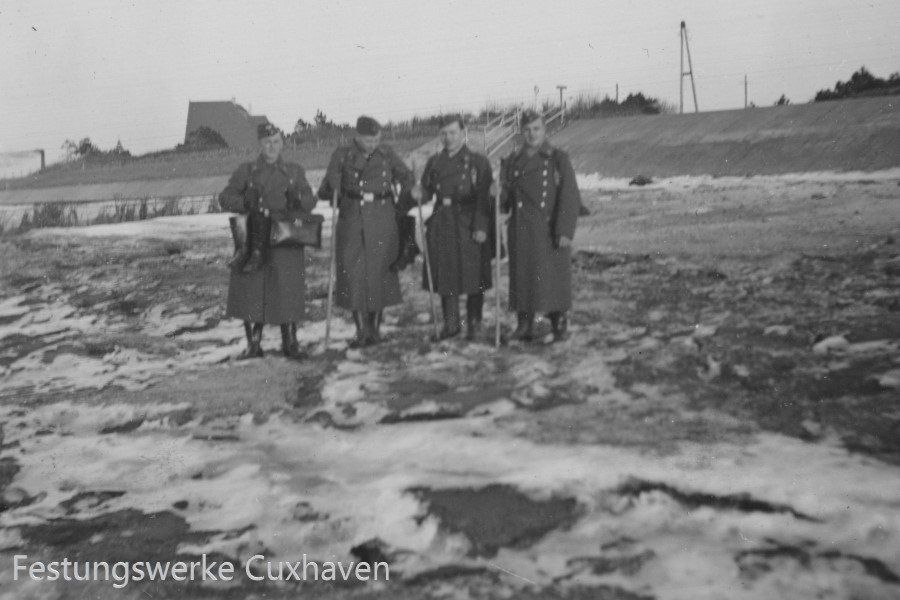
On the way through the ice masses over the mudflats to the island of Neuwerk. From today's perspective, it's life-threatening, but nobody asked about it back then. The photo was taken on the dune path near the Duhner Spitze. In the background is "Haus Seehütte" and the smoking chimney of the "Görne Foundation". Source: MB

Luftwaffe soldiers on their way to their Neuwerk office.Source: MB
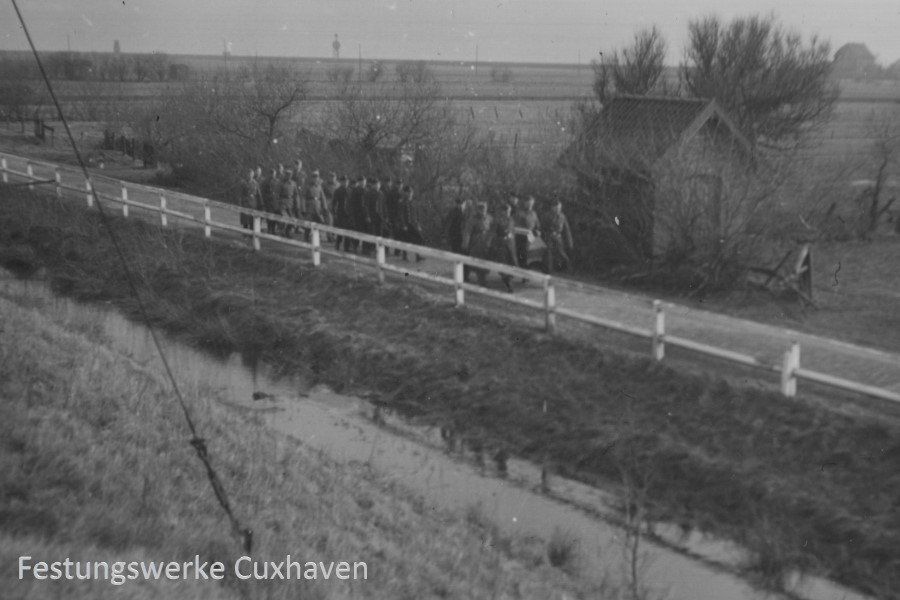
Funeral procession in front of the tower mound, possibly the crew member of a shot down Allied aircraft or a German soldier who was killed in a low-level attack on Scharhörn. Source: MB

Forces of the Air Force Intelligence Unit of Neuwerk on Duhner Strand.Source: MB
On June 30, 1940, this Handley Page Hampden bomber was shot down by Wesermünde naval anti-aircraft guns in the mudflats between Spieka-Neufeld and the island of Neuwerk. The twin-engine light bomber of the Royal Air Force with the identification QR-S, Reg. No.: P4356, was assigned to Squadron No. 6 from Hemswell Air Base in Great Britain. Two crew members were killed in the firefight and the subsequent emergency loading, and two survivors were taken prisoner.
These were F/O. Wyatt, GM KIA Cuxhaven BWC 26.D.1. P/O. Adams, LS POW Sgt. Hill, HG POW, Sgt.Burnett, R.KIA Cuxhaven BWC 26.C.14.The dead were first buried in Cuxhaven-Brockeswalde. After the end of the war they were reburied in the Becklingen military cemetery in the Lüneburg Heath.The recovery of the aircraft described here by the company Taucher O. Wulf shows the machine described.

The shot down British Handley Hampden bomber between Neuwerk and Spieka-Neufeld. The type was a medium bomber that was often used to lay mines because it could fly extremely slowly. Source: MB
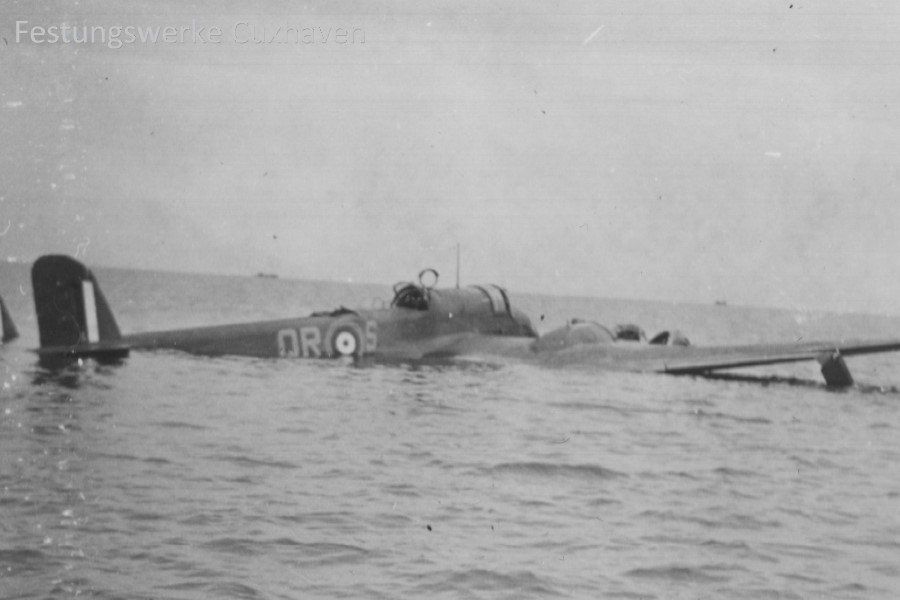
The aircraft with the registration QR - S belonged to 61 Squadron of the Royal Air Force from Hemswell in Great Britain. Source: MB
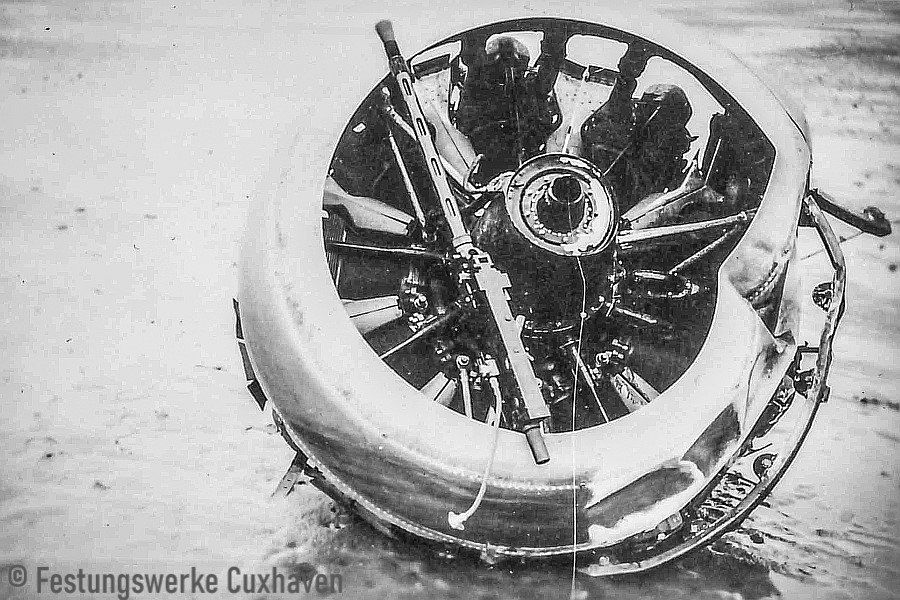
The torn-off front part of an engine and an on-board weapon of the crashed bomber.Source: Hendrik Friedrichs/Wremen
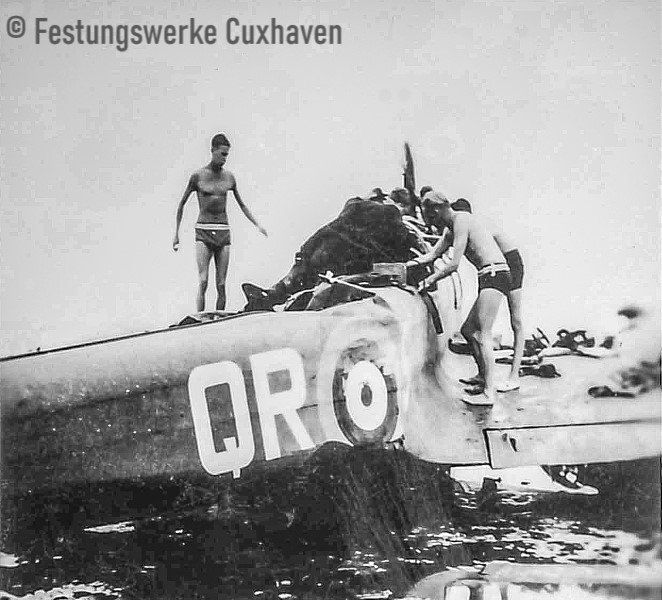
The aircraft is thoroughly inspected after the rescue/recovery of the crew.Source: Hendrik Friedrichs/Wremen

Apparently, despite severe damage and serious injuries, the pilot managed to land the plane in the mudflats.Source: MB

Due to the severe damage, the subsequent emergency landing must have been a very hard impact. Among other things, the tail section broke off and parts of the engine were scattered around the aircraft.Source: Hendrik Friedrichs/Wremen
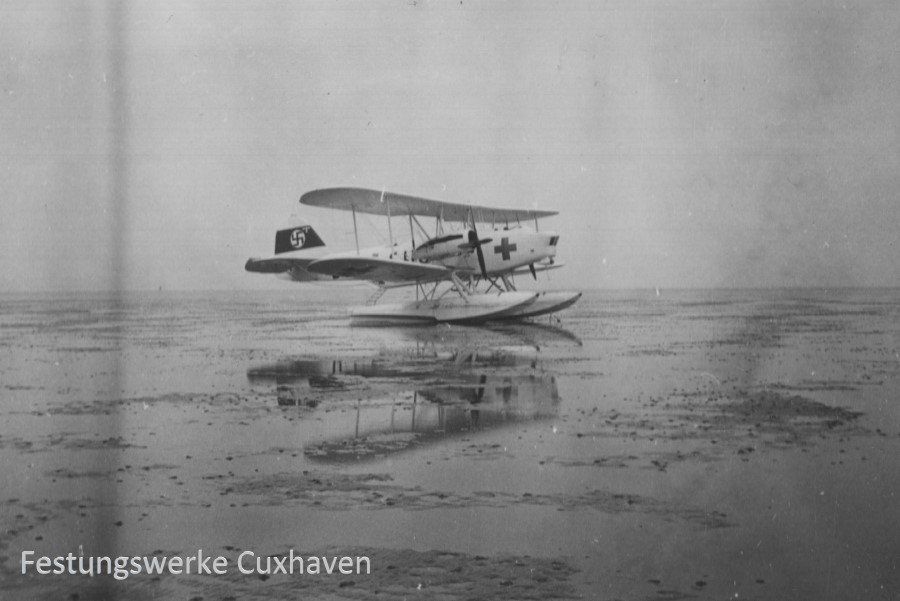
Heinkel HE 59 C-2 of the sea rescue squadron from Norderney in the mudflats near the crashed plane. These twin-engine biplane seaplanes were initially used frequently to rescue the crews of downed planes from the sea. The plane in question was the D-ASUO. Source: MB
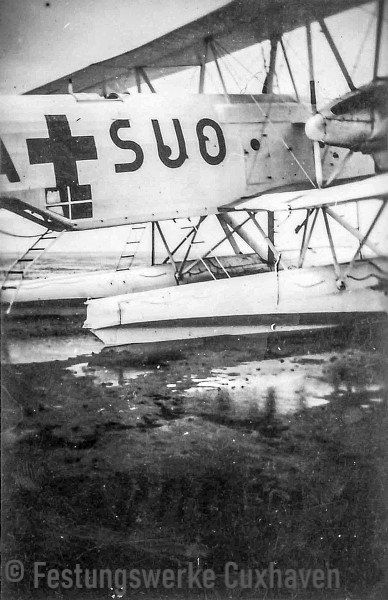
The flying boats in the area of the German North Sea coast were then under the command of the Sea Rescue Center (Air) North, which was set up on August 26, 1939 in Wilhelmshaven-Sengwarden. It was in charge of the Sea Rescue Squadron 1 in Norderney, the Sea Rescue Squadron 4 in Wilhelmshaven, the Sea Rescue Squadron 5 in List and the Sea Rescue Flotilla 5 in Wilhelmshaven. Source: https://www.lexikon-der-wehrmacht.de/Gliederungen/Seenotbereichskommando/SBK5.htmPhoto source: MB
30.06.1940
Aircraft type: Handley Page Hampden, twin-engine light bomber, Royal Air Force, registration: QR-S, registration number: P4356, Squadron No. 61, crashed after anti-aircraft fire from MAA Wesermünde/Brhv. between Spieka Neufeld and Neuwerk, two prisoners, two dead.
F/O. Wyatt, G. M. KIA Cuxhaven BWC 26.D.1. P/O. Adams, L. S. POW Sgt. Hill, H. G. POW, Sgt.Burnett, R.KIA Cuxhaven
BWC 26.C.14.
Erstgrablage der Toten in Cuxhaven-Brockeswalde, Endgrablage auf dem Becklingen Soldatenfriedhof (Lüneburger Heide).
Die hier beschriebene Bergung des Flugzeugs durch die Fa.Taucher O. Wulf, zeigt mit sehr großer Wahrscheinlichkeit die hier beschriebene Maschine.
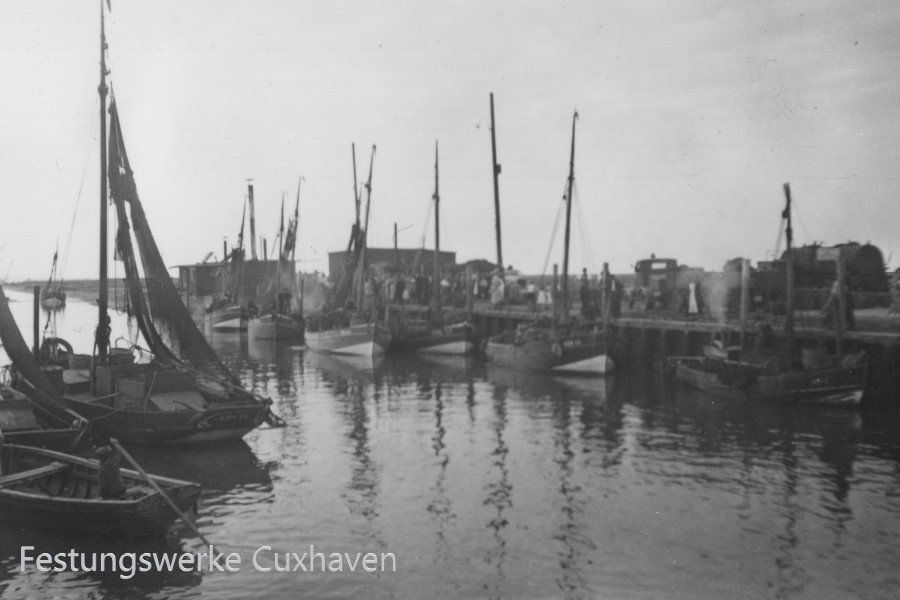
Transporte von Gütern und Personal wurde stellenweise auch von den Kutterhäfen an der Wurster Küste, wie hier Dorumer Tief oder Spieka - Neufeld nach Neuwerk durchgeführt.
Quelle: M.B.

Das Rettungsboot der DGzRS "Geheimrat Heinrich Gerlach" operierte oft im Wattgebiet der Wurster Nordseeküste. Neben der normalen Seenotrettung war es auch stets vor Ort, um im Bedarfsfall notgewasserten Flugzeugbesatzungen aller Nationen Rettung zu bringen. Es trägt nach den Genfer Konventionen, das gut sichtbare Rote Kreuz.
Quelle: M.B.

In good seas to the island of NeuwerkSource: MB
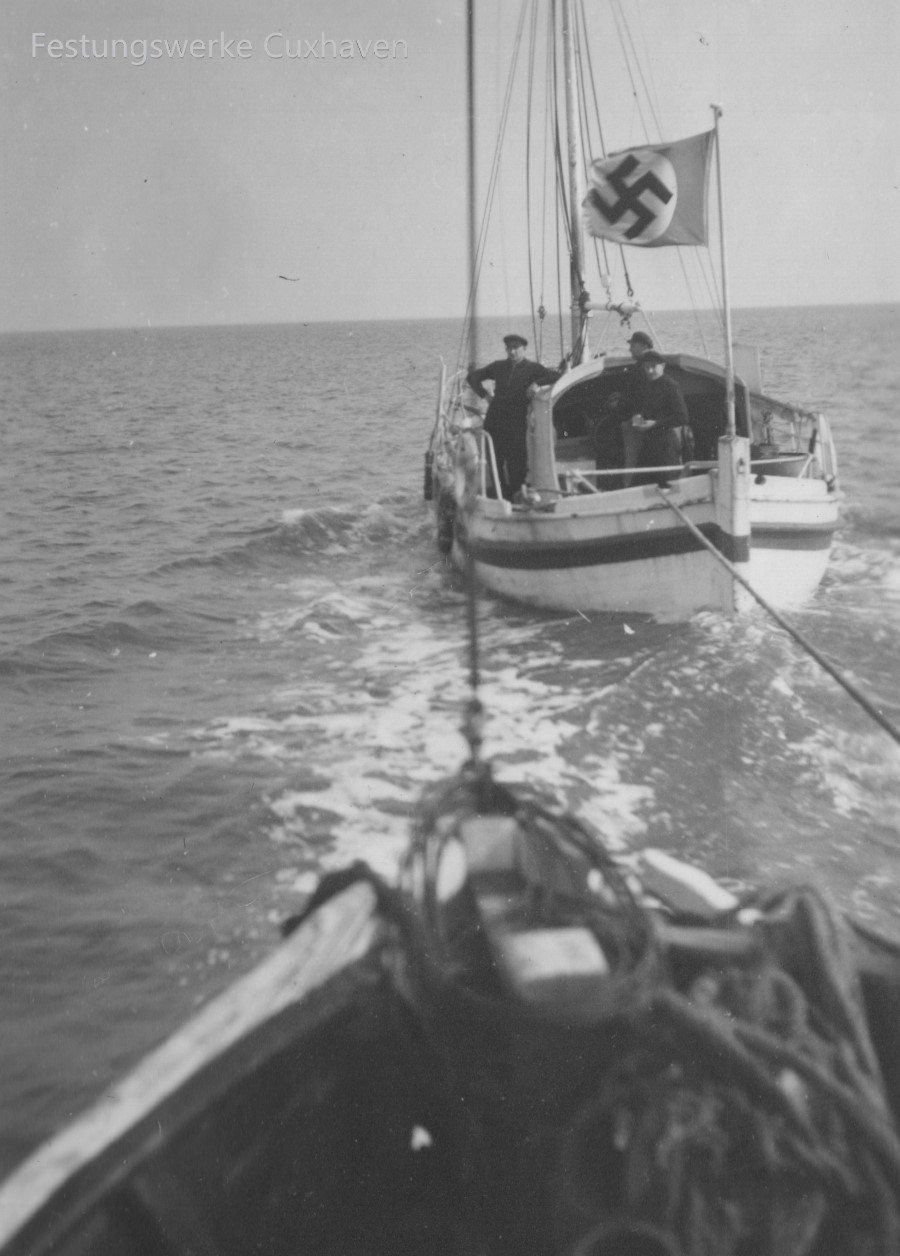
In tow the "Geheimrat Heinrich Gerlach". The boat was stationed in Dorumertief at the time.Source: MB
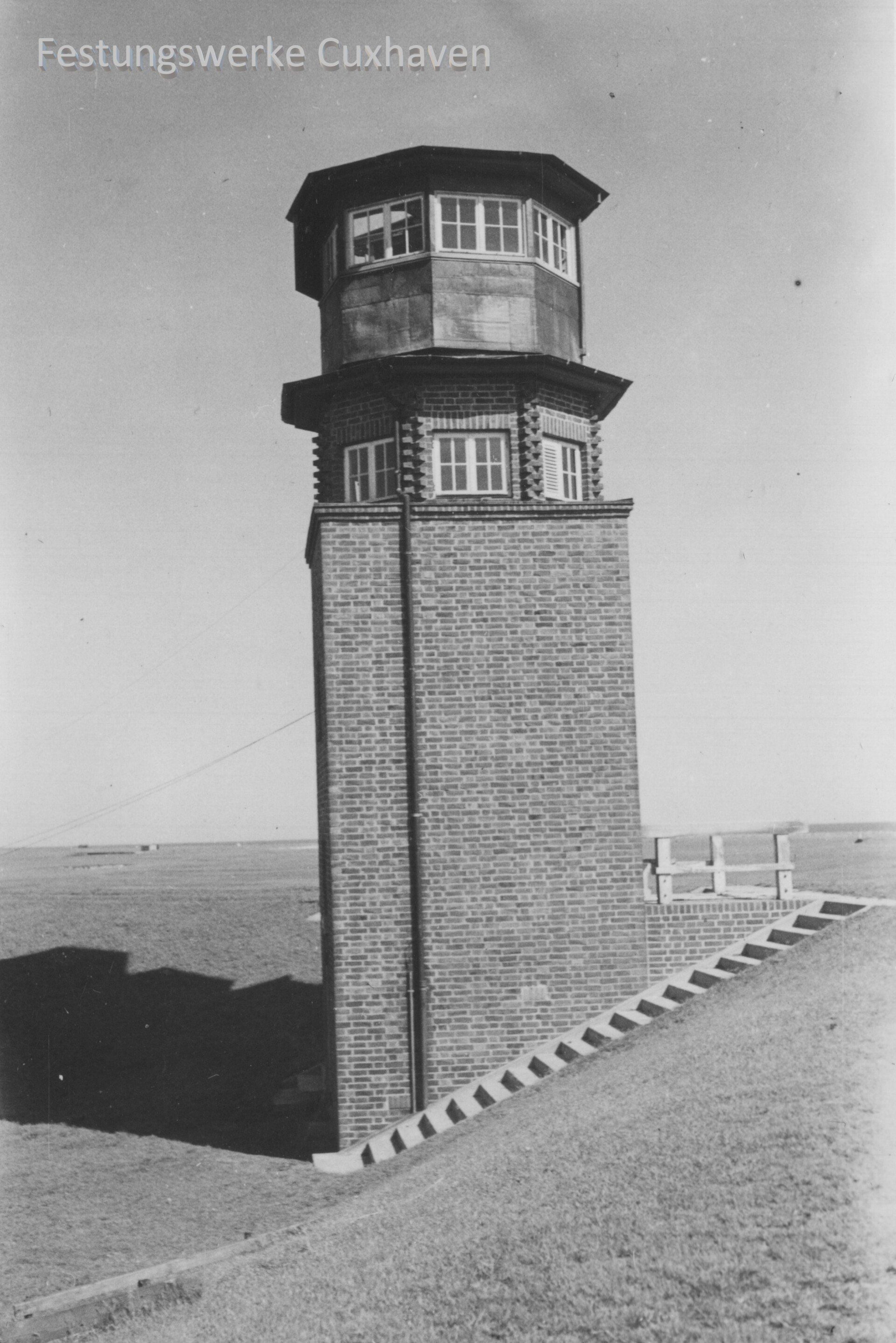
Vermutlich bereits in den zwanziger Jahren wurden vier dieser Meßstände auf der Insel Neuwerk gebaut. Sie meldeten und bewerteten die Trefferergebnisse des Schießplatzes Altenwalde, von dem aus ins Watt gefeuert wurde. Die Kuppeln sollen drehbar gewesen sein. Die Messtände wurden spätestens 1976 abgerissen.
Quelle: M.B.

The location of the Air Force Intelligence Unit's barracks is ultimately not entirely clear.Source: USAF / NCAP-000-000-013-328

Soldiers at one of the four measuring stations on NeuwerkSource: MB

Deceptive idyll in wartime.Source: MB
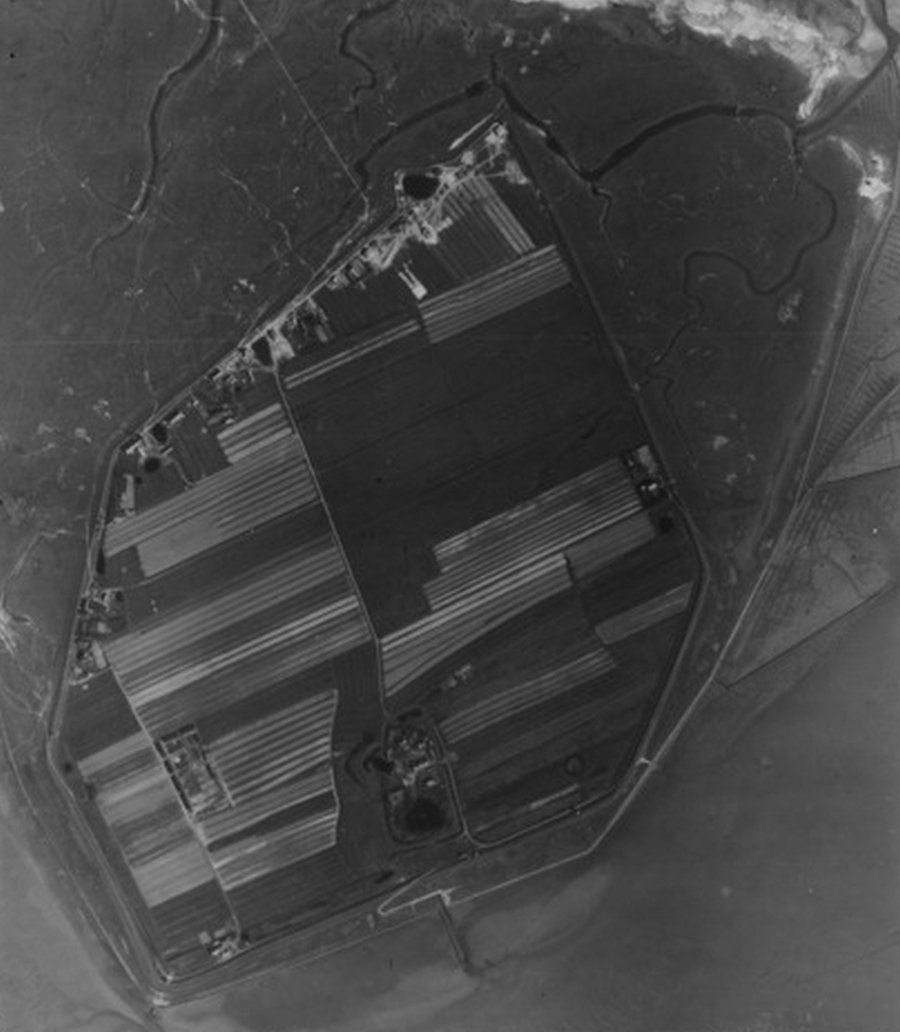
Aerial photo from 16.04.45Source: USAF / NCAP-000-000-013-328

The northern tip of Neuwerk. At that time, a road led from the current fire station through the foreland to the bathhouse.Source: USAF / NCAP-000-000-013-328
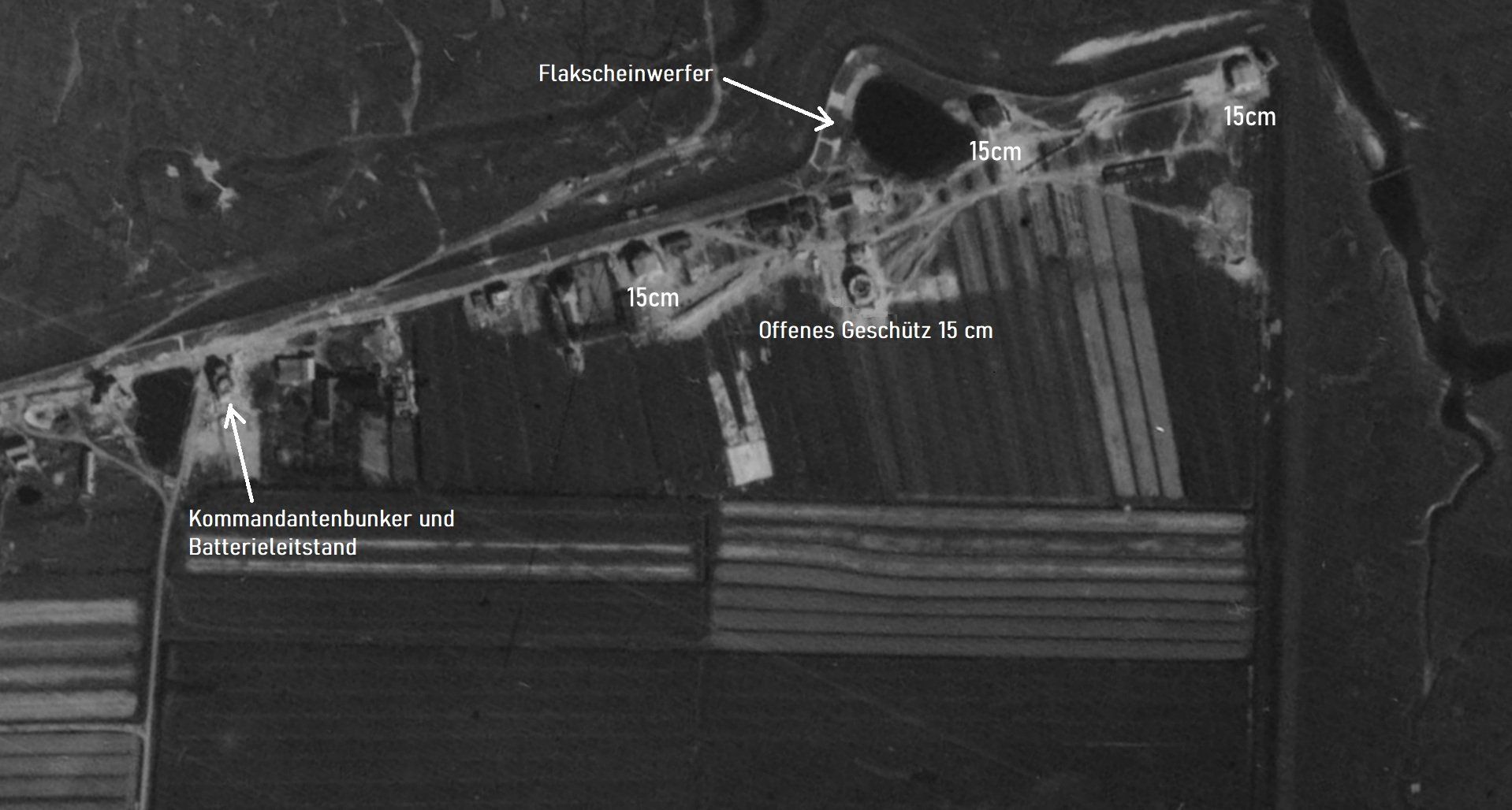
Ab 1944 ging die Batterie 3/114 "Von Stosch" nach langen Planungen auf der Nordseite der Insel in Betrieb. Sie bestand aus vier 15 cm Schiffsgeschützen und sollte diesen Bereich der Elbmündung abdecken. Die Stellung gehörte zur 4. Marineartillerieabteilung in Cuxhaven. Heutzutage sind an dieser Stelle noch einige Fundamente des Maschinenhauses zu erkennen.




